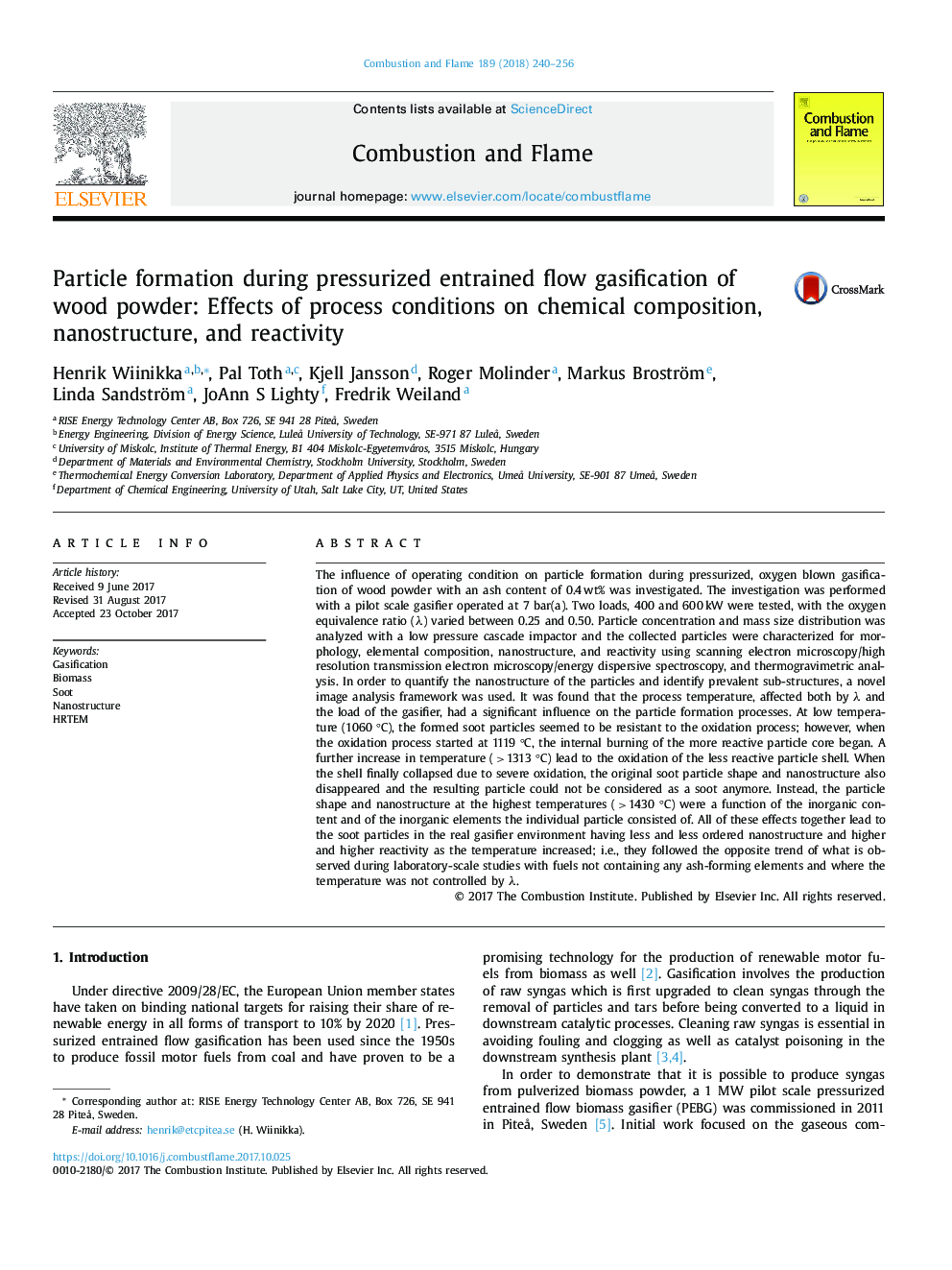| کد مقاله | کد نشریه | سال انتشار | مقاله انگلیسی | نسخه تمام متن |
|---|---|---|---|---|
| 6593907 | 1423548 | 2018 | 17 صفحه PDF | دانلود رایگان |
عنوان انگلیسی مقاله ISI
Particle formation during pressurized entrained flow gasification of wood powder: Effects of process conditions on chemical composition, nanostructure, and reactivity
ترجمه فارسی عنوان
تشکیل ذرات در طی جابجایی تحت فشار جوش داده شده از پودر چوب: تأثیر شرایط فرآیند بر ترکیب شیمیایی، ساختار نانوساختار و واکنش پذیری
دانلود مقاله + سفارش ترجمه
دانلود مقاله ISI انگلیسی
رایگان برای ایرانیان
کلمات کلیدی
موضوعات مرتبط
مهندسی و علوم پایه
مهندسی شیمی
مهندسی شیمی (عمومی)
چکیده انگلیسی
The influence of operating condition on particle formation during pressurized, oxygen blown gasification of wood powder with an ash content of 0.4â¯wt% was investigated. The investigation was performed with a pilot scale gasifier operated at 7 bar(a). Two loads, 400 and 600â¯kW were tested, with the oxygen equivalence ratio (λ) varied between 0.25 and 0.50. Particle concentration and mass size distribution was analyzed with a low pressure cascade impactor and the collected particles were characterized for morphology, elemental composition, nanostructure, and reactivity using scanning electron microscopy/high resolution transmission electron microscopy/energy dispersive spectroscopy, and thermogravimetric analysis. In order to quantify the nanostructure of the particles and identify prevalent sub-structures, a novel image analysis framework was used. It was found that the process temperature, affected both by λ and the load of the gasifier, had a significant influence on the particle formation processes. At low temperature (1060 °C), the formed soot particles seemed to be resistant to the oxidation process; however, when the oxidation process started at 1119 °C, the internal burning of the more reactive particle core began. A further increase in temperature (â¯>â¯1313 °C) lead to the oxidation of the less reactive particle shell. When the shell finally collapsed due to severe oxidation, the original soot particle shape and nanostructure also disappeared and the resulting particle could not be considered as a soot anymore. Instead, the particle shape and nanostructure at the highest temperatures (â¯>â¯1430 °C) were a function of the inorganic content and of the inorganic elements the individual particle consisted of. All of these effects together lead to the soot particles in the real gasifier environment having less and less ordered nanostructure and higher and higher reactivity as the temperature increased; i.e., they followed the opposite trend of what is observed during laboratory-scale studies with fuels not containing any ash-forming elements and where the temperature was not controlled by λ.
ناشر
Database: Elsevier - ScienceDirect (ساینس دایرکت)
Journal: Combustion and Flame - Volume 189, March 2018, Pages 240-256
Journal: Combustion and Flame - Volume 189, March 2018, Pages 240-256
نویسندگان
Henrik Wiinikka, Pal Toth, Kjell Jansson, Roger Molinder, Markus Broström, Linda Sandström, JoAnn S Lighty, Fredrik Weiland,
